In the second half of the 19th century, the need arose several times for the construction of market halls, but its implementation had to wait until the end of the century. At that time, the solution to the problem was taken over by councillor Alajos Matuska: he proposed setting up a central market hall and 1-1 branch hall per district.
The location of the district market halls was designated at the more densely populated, busy points, typically in the old markets. The construction of the central market hall was a priority. Several proposals were made for its location, but in the end, the former Sóház Street plot on the Danube Banks was selected. Before the start of the works, the dilapidated building here and the adjacent expropriated houses were demolished to make as much space as possible available.

Samu Pecz's original plan for the Vámház Boulevard facade of the Central Market Hall in the 28 December 1893 issue of the Építő Ipar
The capital has decided to launch an international tender for the design of the central market hall. After studying foreign examples, the application of the iron and glass structure and the construction of a cellar system suitable for storage and cooling were the criteria of the tender announced in 1892. Nine applications were received by the deadline (4 from Budapest, 1-1 from Leipzig, Berlin, Paris, Prague, Sofia), of which the jury considered the plan of Professor Samu Pecz to be the most expedient. However, the French company Escande and Gourmez, which received the second most votes, did not give up the fight: it unexpectedly made a more favourable proposal. Thanks to this, in 1893 the capital invited Samu Pecz and the experts from Paris to another closed competition, from which again the professor of the Technical University won.
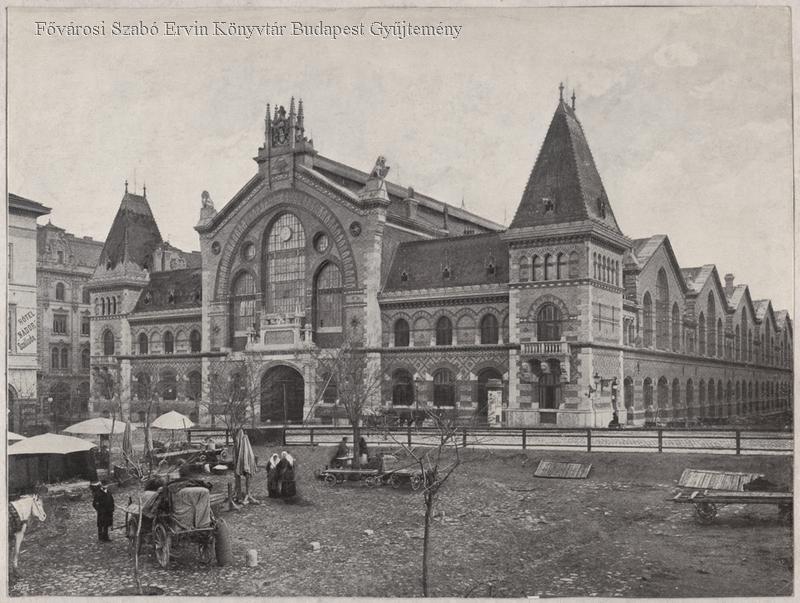
The Market Hall on Fővám Square 1900 (Photo: FSZEK, Budapest Collection)
Excavation work began in 1894, and by the millennium, the building was ready for handover, but a fire broke out in the morning on 30 July causing the middle part of the roof to burn. According to contemporary magazines, the accident may have been due to the carelessness of the tinsmiths working under the roof. Thus, the technical handover of the building took place only in December 1896, and the official opening was on 15 February 1897.
“One cannot admire the market halls, the latest sights of Budapest enough. Especially the huge central market hall - next to the magnificent Ferencz József Bridge and the customs palace - which is a real attraction even in the eyes of the people of the capital”
- wrote the Vasárnapi Ujság after the opening of the halls on 6 June 1897.
The main facade of the building is symmetrical to the entrance opening from the central risalit. The most prominent part of this is the set of windows above the entrance, in the middle of which is placed a clock. At each end of the gable, a lion turns towards Pest and Buda.
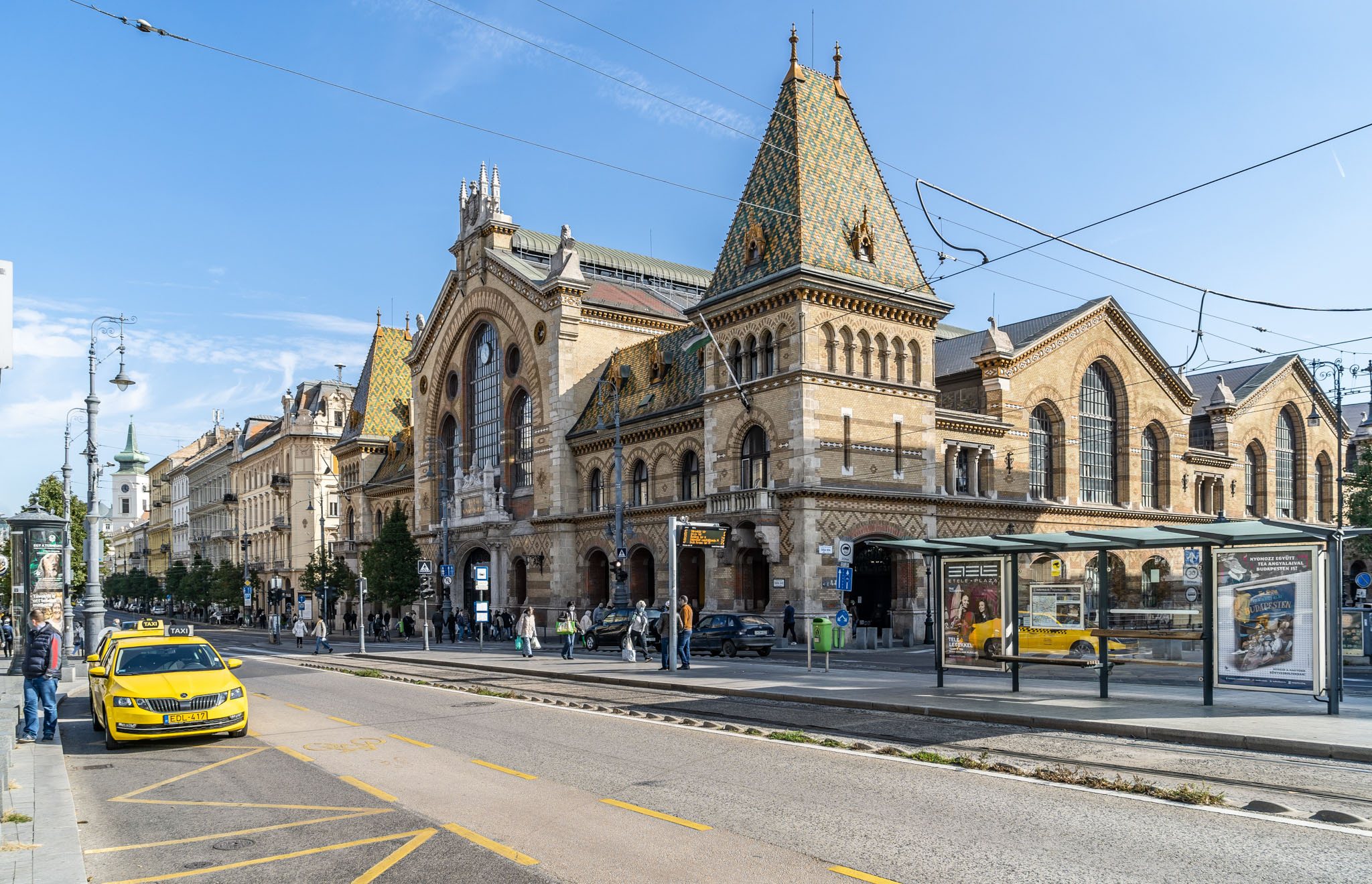
The Central Market Hall in today's Fővám Square (Photo: Balázs Both/pestbuda.hu)
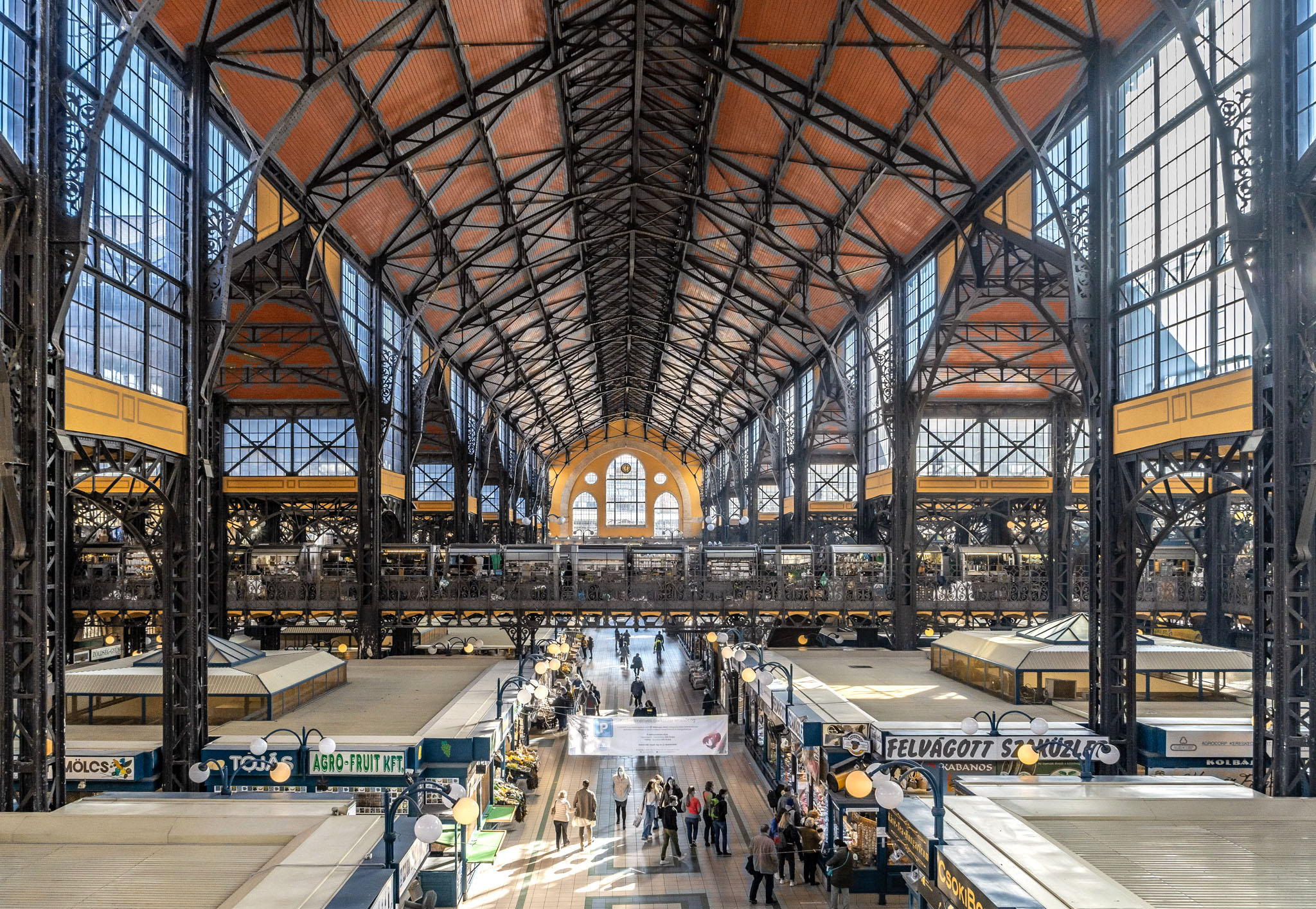
The interior of the market hall (Photo: Balázs Both/pestbuda.hu)
The most famous craftsmen and contractors of the age took part in the construction. Among them we can highlight Vilmos Zsolnay from Pécs, who made the glazed tiles and ceramic heads of the roof, Schlink's iron foundry, which produced the steel structures, Drasche's Kőszénbánya és Téglagyár Rt., which produced the facade decoration, and locksmith work was done by Ferenc Svadló and Gyula Jungfer.
The interior was divided by a carriageway. On the east side and in the gallery were the counters of the retailers, and on the west side were the counters of the wholesalers. Separated from the large market space, at the very end of the building was the so-called poultry hall, where the sale of live animals was placed. On the ground floor, there was the office of the Inspector General, a restaurant, the market police station, a guard room and sanitary facilities, and in the basement, there were warehouses, cold rooms, electrical supply centres and boiler houses.
Interior of the market hall as seen from the Vámház Boulevard entrance (Source: Vasárnapi Ujság, 22 November 1896)
Fruit and vegetable stalls (Source: Vasárnapi Ujság, 6 June 1897)
The fish market in the year of opening, in May 1897, during the visit of Franz Joseph (Source: Vasárnapi Ujság, 6 June 1897)
Poultry Market in the Central Market Hall (Source: Vasárnapi Ujság, 6 June 1897)
Vegetable vendors on a contemporary drawing (Source: Vasárnapi Ujság, 6 June 1897)
The good location of the central hall also facilitated the transport of goods. The port on the shore was connected by a tunnel to the basement of the hall so that goods arriving on the water could easily enter the warehouses. Land transport was handled by trains running into the hall, which could only run at night so as not to disturb customers and vendors during the day.
In the newly built hall, King Franz Joseph also paid his respects in May of the year of opening. He spent more than an hour in the building adorned with flowers, talking at length with representatives of the city office, and even writing in the guestbook. The German emperor William also visited the building when he was in the capital.
Franz Joseph writes his name in the guestbook of the Market Hall. Based on a photograph by Antal Weinwurm (Source: Vasárnapi Ujság, 6 June 1897)
Although on a smaller scale, the four district halls were built in a similar floor plan. The Hunyadi Square and Hold Street Market Halls were designed by Győző Czigler, professor of the Technical University, and the buildings on István Square (today's Klauzál Square) and Rákóczi Square were designed by the staff of the Budapest Engineering Office. They were handed over at the same time as the central building.
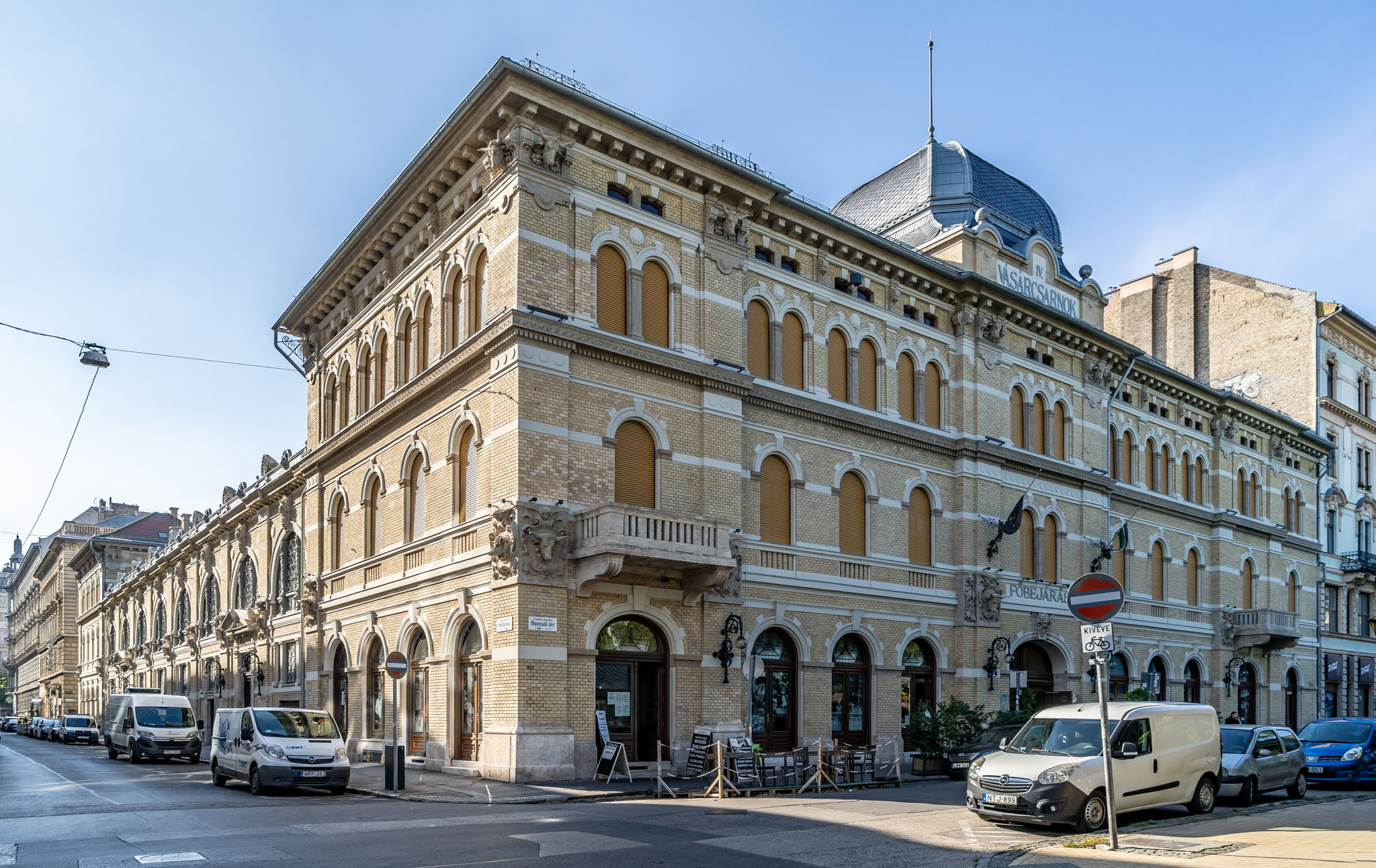
The Hunyadi Square Market Hall (Photo: Balázs Both/pestbuda.hu)
According to the decision of the city administration, open-air markets could no longer operate in the areas where a market hall was established. Not everyone welcomed the elimination of open markets. Respondents in one of the interviews in the 15 November 1896 issue of Fővárosi Lapok were not really happy about the newly built halls. There was also a short, sonorous poem (Song about the Market), some lines of which also felt saddened by the closure of markets:
“There will be no open sky and frescoed roofs
over the sellers;
Painted cement after the open sky,
The day of the markets is gone. ”
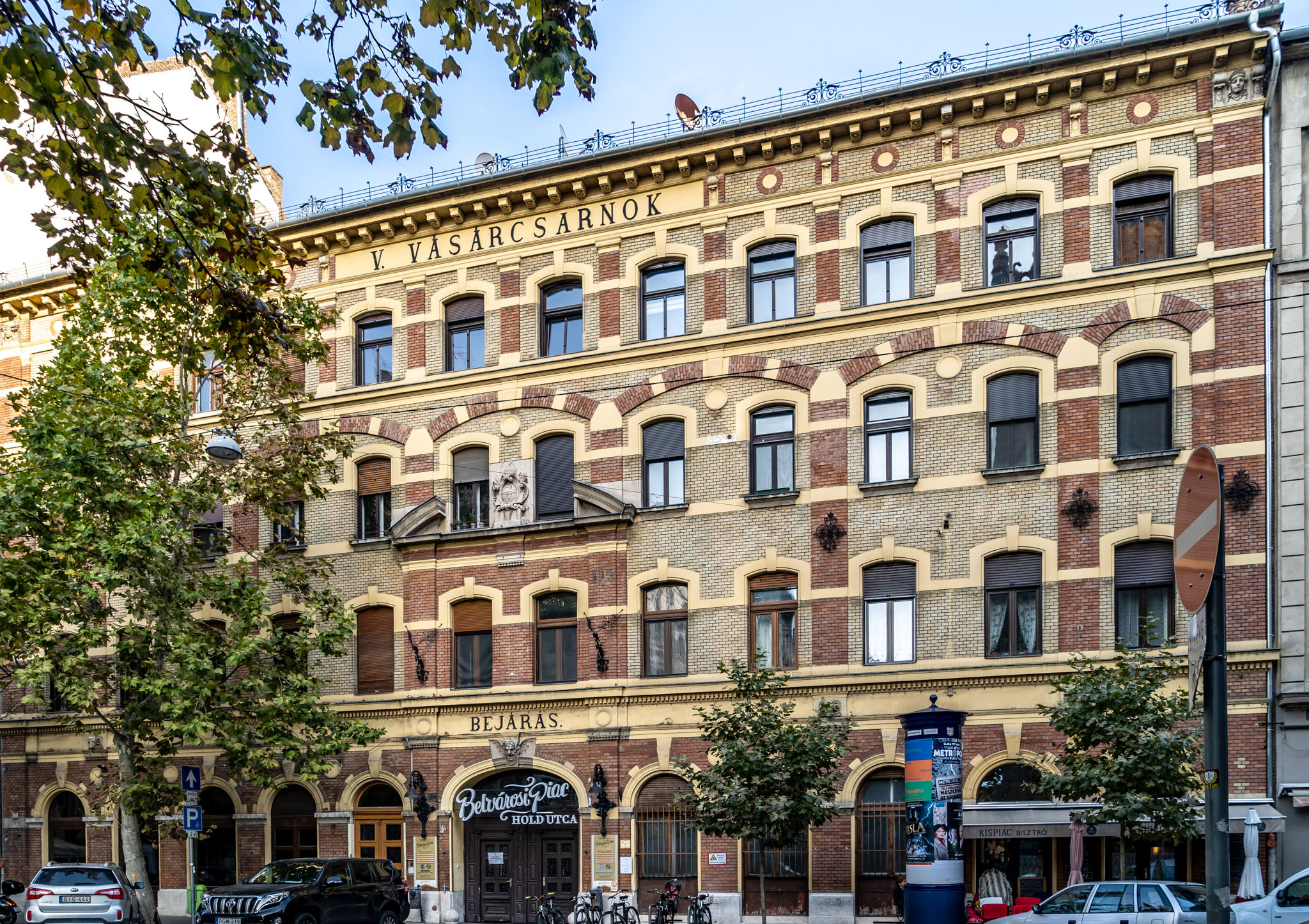
The Hold Street Market Hall (Photo: Balázs Both/pestbuda.hu)
Not only the buildings were a novelty, but also the regulation of the sale and purchase in them. Only vendors who paid a monthly or daily price for the booth, were cleanly dressed, and were completely healthy could offer their things for sale. The quality of the food for sale was constantly monitored and the rules also required sellers to keep their counters clean and tidy.
The former loud sellers offering goods were not allowed in the halls, but the incoming customer also had to comply with a number of etiquette rules.
“It is forbidden to disturb public order and silence by stopping traffic routes, grouping, shouting, singing, whistling. It is forbidden to offend the public with blasphemy, cursing, immoral words or deeds that offend the public.”
Compliance with these was checked by the market police.
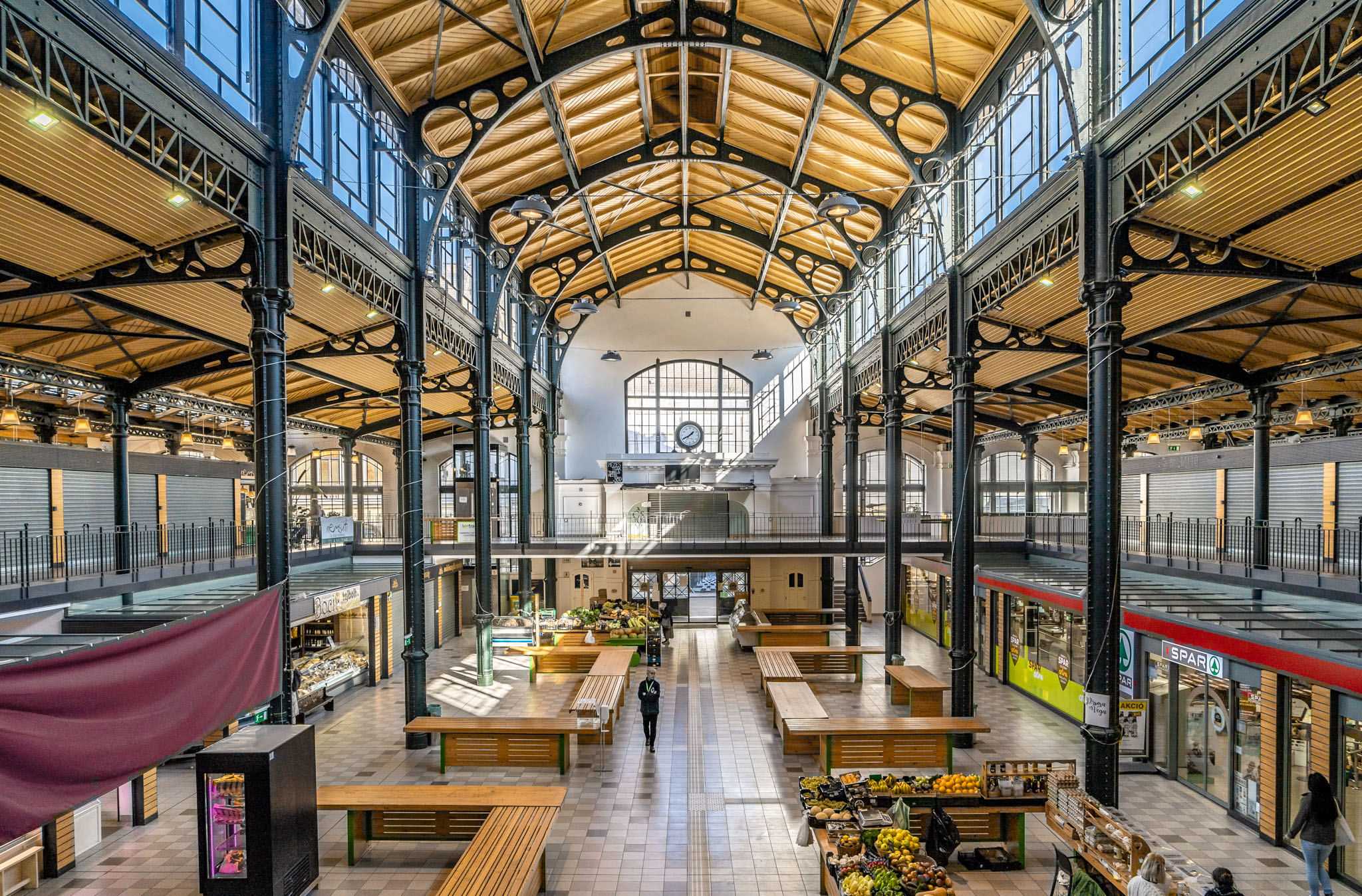
The middle three naves of the Klauzál Square Market Hall (Photo: Balázs Both/pestbuda.hu)
The capital also set the opening hours for the market halls. The opening hours in the morning were determined as usual in the open-air markets: customers could arrive between 5 and 12 am in summer and between 6 and 12 am in winter. Introduced similar to the German model, in the afternoon the market halls were open from 4 to 7 pm in summer and from 4 to 6 pm in winter. The busiest were the central market halls at Hunyadi and István Square, as the most visited markets used to be in their places.
Customers who visited regularly quickly found that the Rákóczi Square Market Hall had the largest selection of smoked butcher's goods, but it was best to go to Hunyadi Square for the poultry, and Italian novelties and exotic fruits awaited customers on Hold Street.
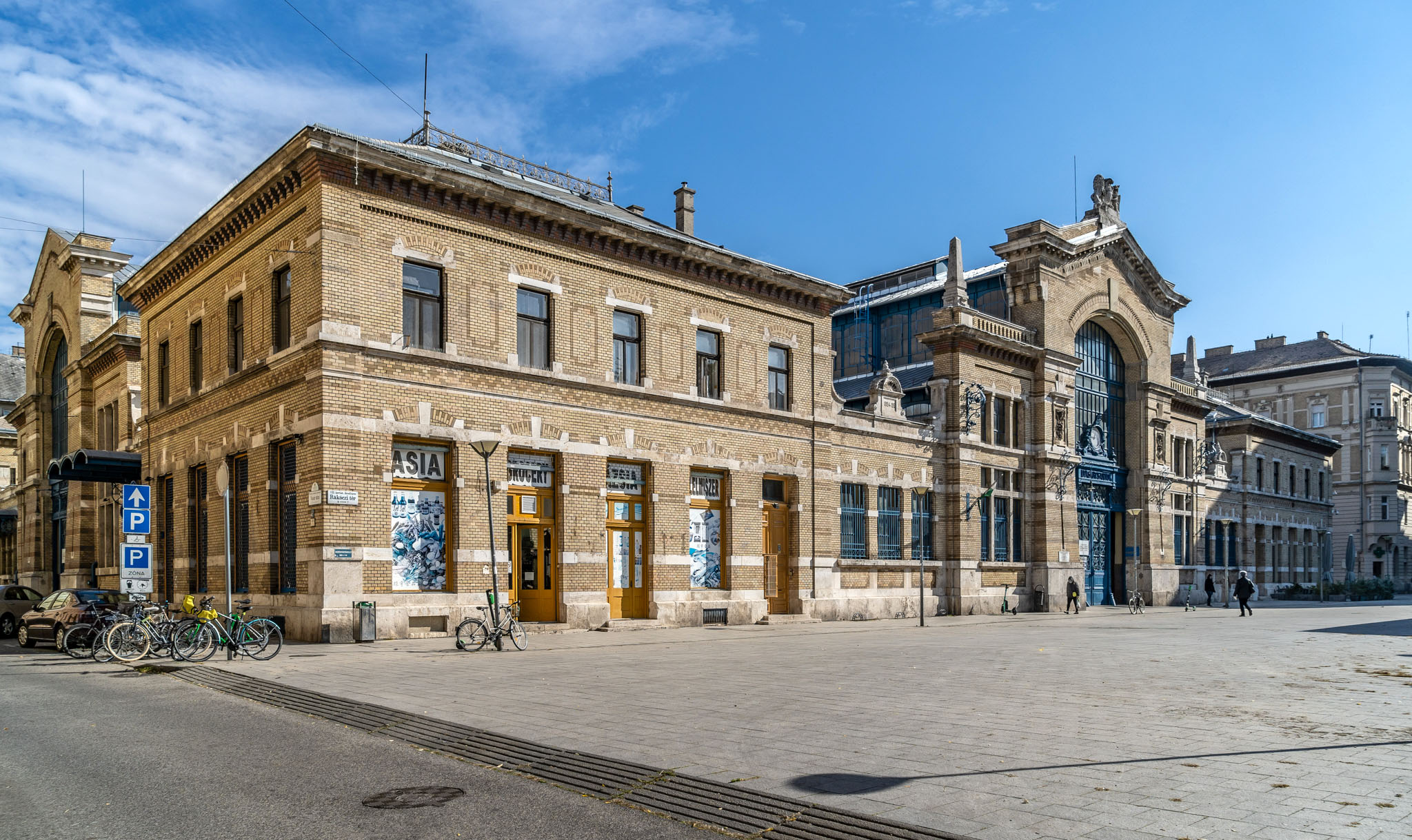
Rákóczi Square Market Hall (Photo: Balázs Both/pestbuda.hu)
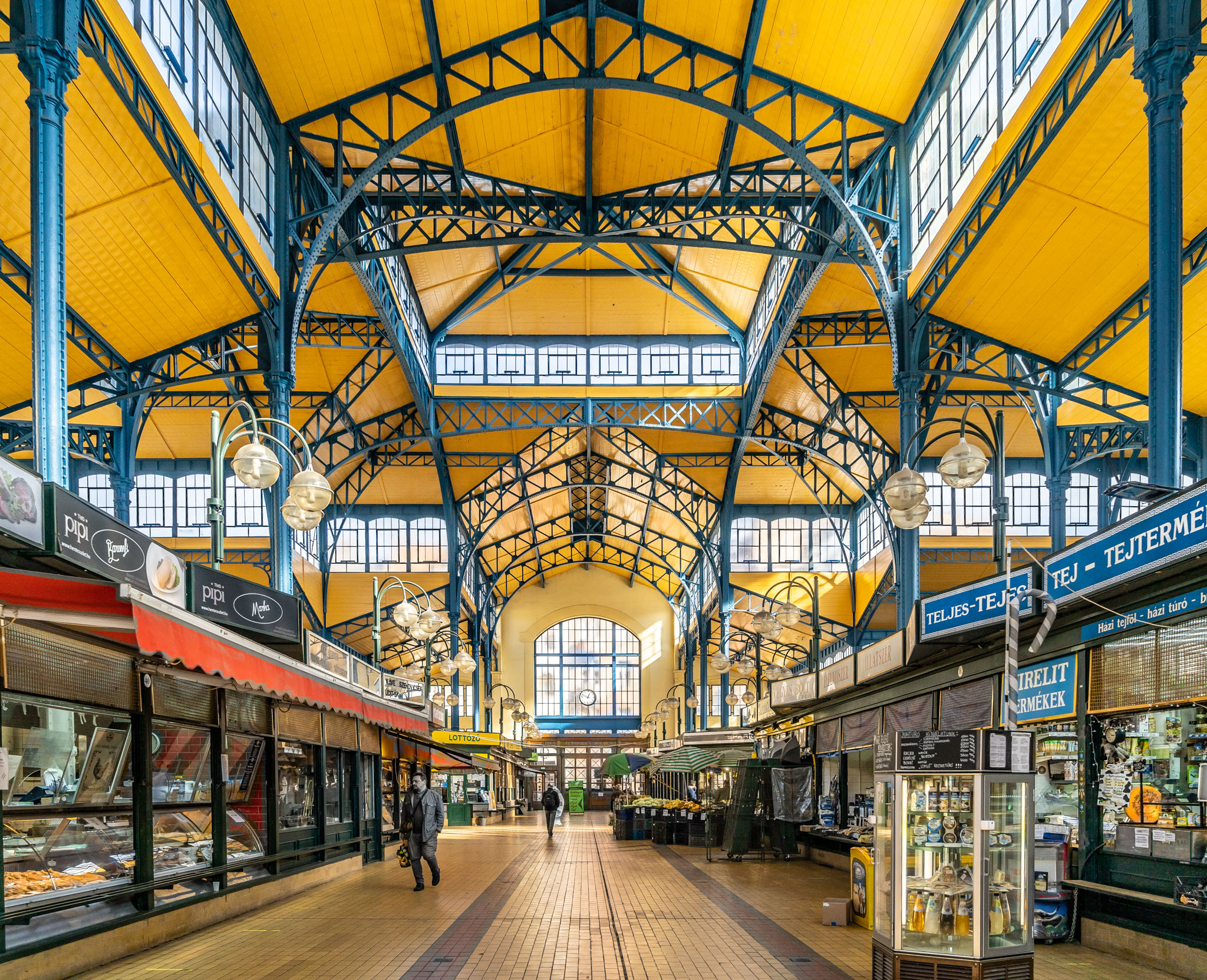
The five-nave interior of the Rákóczi Square Market Hall (Photo: Balázs Both/pestbuda.hu)
The contemporary press wrote more and more about what everyday life is like in the market halls. Even though neither the buyers nor the sellers were happy at first, after a while people got used to the market halls and that certain “hall atmosphere” developed. It was mainly the ladies who visited here, Fried Margit Ego (pen name) wrote honestly and amusingly about it at the time:
“True, we are not so beautiful in the market hall. Every tasteful woman has a storm-proof, pre-flood hall hat and coat. It is her duty to make herself a scarecrow on the sacred altar of the household. She who dresses elegantly is laughed at. Here, everyone appears honest and with their own nature and hair.”
It can be felt that with the establishment of the market halls, a new era has arrived in the field of food supply and shopping in the capital. From then on, as the text of the song published in the November 1897 issue of Fővárosi Lapok said, "food can be obtained for the stomach of the capital only here".
Cover photo: The Fővám Square Market Hall in 1898 (Magyar Mérnök és Építész Egylet Közlönye, Issue 1898/6)

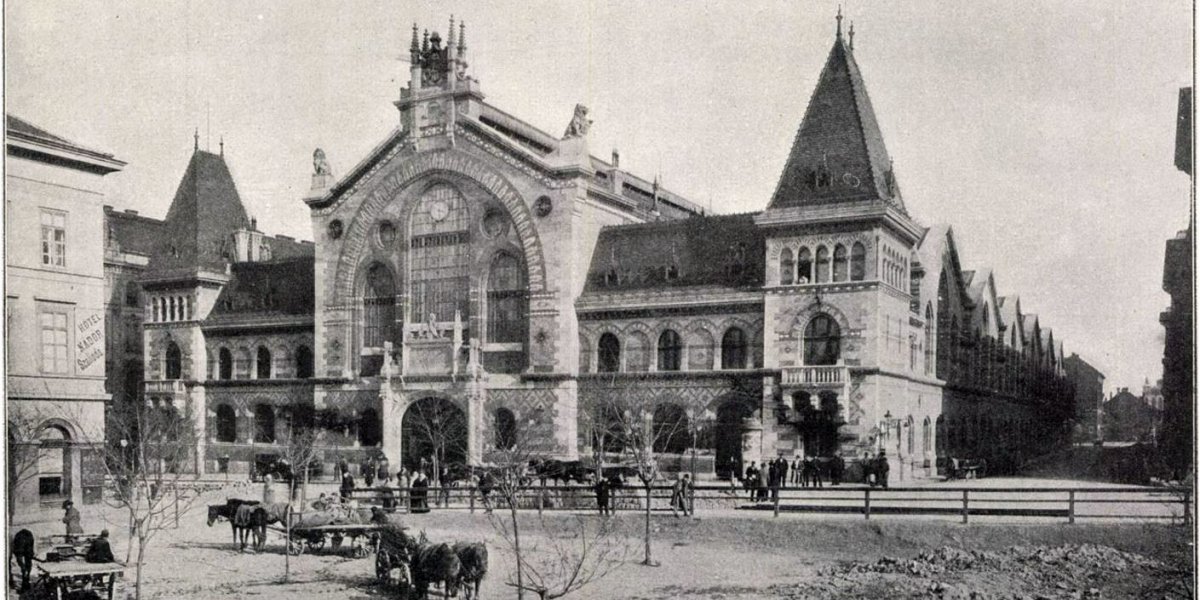


































Hozzászólások
Log in or register to comment!
Login Registration